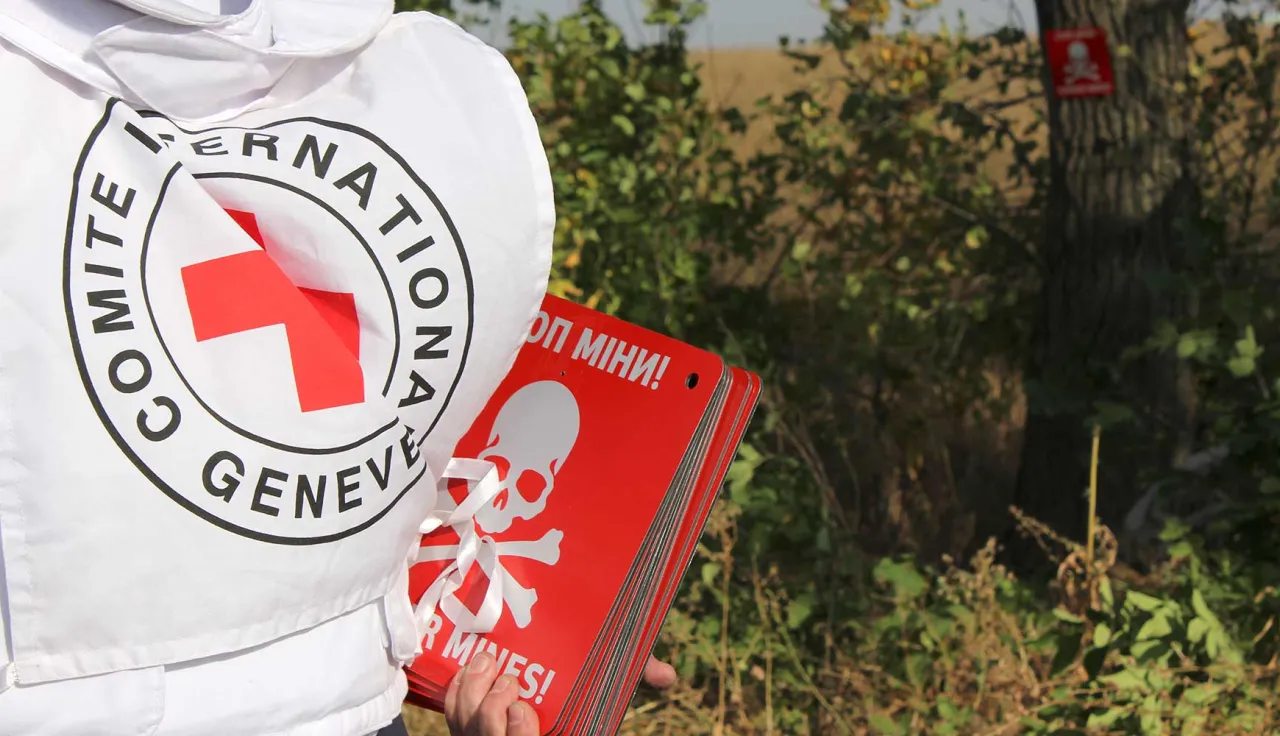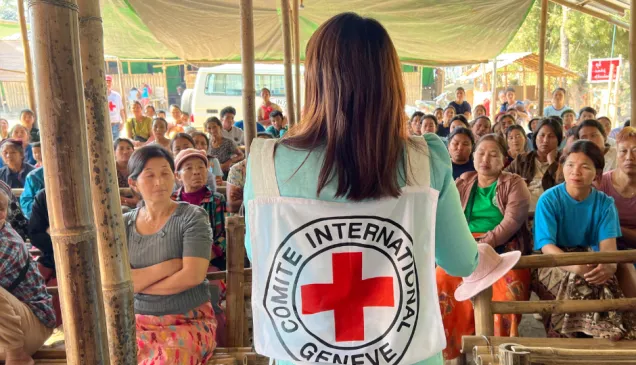What is the ICRC doing to reduce the effects of weapon contamination?

Even long after a conflict ends, people suffer from the consequences of weapon contamination, unexploded munitions continue to kill and maim, people affected by chemical agents continue to suffer. Weapon contamination encompasses the presence of mines, explosive remnants of war (ERW) and other sources of contamination, including the deliberate or accidental release of chemical, biological, radiological and nuclear hazards, also known as CBRN.
It deprives entire populations of access to essential goods and services, such as clean water, firewood or farmland and health care or education, and to livelihood and critical infrastructures, such as water treatment plants or hospitals. It impedes relief work, depriving people of humanitarian aid and aggravating humanitarian problems.
What the ICRC is doing to reduce the effects of weapon contamination on civilians
Preventing accidents and reducing the effects of weapon contamination go hand in hand with activities to help those who have fallen victim to weapon contamination, such as prehospital decontamination, physical rehabilitation, surgery and economic security programmes.
The ICRC endeavours to mitigate the impact of weapon contamination on the population through a flexible, multidisciplinary approach. In particular, it does so through initiatives that aim to reduce the exposure of civilians to conventional and non-conventional hazards by raising awareness of risks, promoting safe behaviour, and conducting other risk reduction activities.
Exactly what the ICRC does to prevent accidents and reduce the effects of weapon contamination depends on the context, but our work generally includes a combination of the following:
- Information management;
- risk awareness and the promotion of safer behaviour;
- risk reduction (through the mobilisation other ICRC Assistance or Protection capacities);
- survey and clearance.
Information management
Information management encompasses the collection, assessment, analysis, mapping and dissemination of data related to weapon contamination and CBRN materials. This information – on the type and location of the contamination, the date and time of incidents, victims’ profiles and the types of behaviours at risk – helps stakeholders identify dangerous areas and plan/prioritize activities to minimize the possibility of future incidents.
Where possible, such activities are carried out with national authorities, NGOs or National Societies of the Red Cross or Red Crescent. Given their presence in almost all countries and their wide local networks, National Societies are often best placed to gather information.
The ICRC helps National Societies or national mine-action authorities build their capacities, to ensure that information-management activities are implemented in conformity with international standards. To this end, the ICRC remains involved in developing tools for data collection, storage and analysis, such as the Information Management System for Mine Action and the International Mine Action Standards (IMSMA). It may also partner with National Societies in gathering data and in providing vital information to actors in the wider mine-action community so that they can prioritize, design and/or adapt their activities.
Risk awareness and safe behaviour
Identifying the patterns of behaviour that expose people to the effects of weapon contamination, and developing and promoting a set of measures aimed at reducing this exposure, requires working together with the communities affected by mines/ERW or CBRN agents. The ICRC conducts sessions on risk awareness and safe behaviour, liaises between at-risk communities and clearance operators, and promotes IHL provisions related to the use of weapons. Dissemination sessions as stand-alone activities are carried out only during emergency situations, when data are insufficient and the risks are imminent. These sessions are usually most effective in immediate post-conflict situations, when displaced people tend to return to their homes rapidly and casualty figures are at their highest.
In all other situations, activities that aim to raise awareness of risks and promote safe behaviour are community-based and linked to risk reduction and decontamination. Finding the best ways to enhance awareness depends on cultural and social factors, on the nature of the threat and on the identification of those most at risk among the population. An interactive, community-led approach has been found to be the most effective means of sharing information.
Owing to their existing local networks and their understanding of the contexts they operate in, National Societies are uniquely positioned to help people affected by weapon contamination and to do so in a timely and appropriate manner. The ICRC seeks to cooperate closely with the local National Society wherever possible.
Risk reduction
In countries disrupted by conflict, people often have no choice but travel through areas contaminated by mines/ERW or CBRN agents in order to farm, collect water and firewood, graze livestock. Until these hazards are cleared, incidents can be reduced by providing safer alternatives that are often implemented in coordination with, or as part of, the ICRC’s economic security and water and habitatsub-programmes. For example, to minimize the need for people to go to contaminated areas to carry out their day-to-day activities or earn their livelihoods, the ICRC marks safe areas, establishes or provides alternative fuel and water sources, and extends micro-loans or provides grants for small businesses.
Surveying and clearance
The ICRC has the capacity to directly survey and clear areas contaminated by conventional and CBRN hazards. It will engage in such activities if certain conditions are met and a specific added value is identified, such as when the ICRC has sole access to an area where weapon contamination has a humanitarian impact on nearby communities. For instance, in situations where mines/ERW block safe access to essential infrastructure and/or prevent the ICRC and its partners from carrying out humanitarian activities, the ICRC can deploy explosive ordnance disposal (EOD) specialists as part of its response teams. In other situations, the ICRC will seek to mobilize others who are capable of doing so in line with the IMAS.
While the ICRC will not engage in long-term clearance projects, it may provide States with technical or other assistance in this regard. As part of these efforts, the ICRC has also been strengthening its expertise in the area of medical support since 2015; this includes the development of specialized equipment kits and training for medical responders that support clearance operations.



